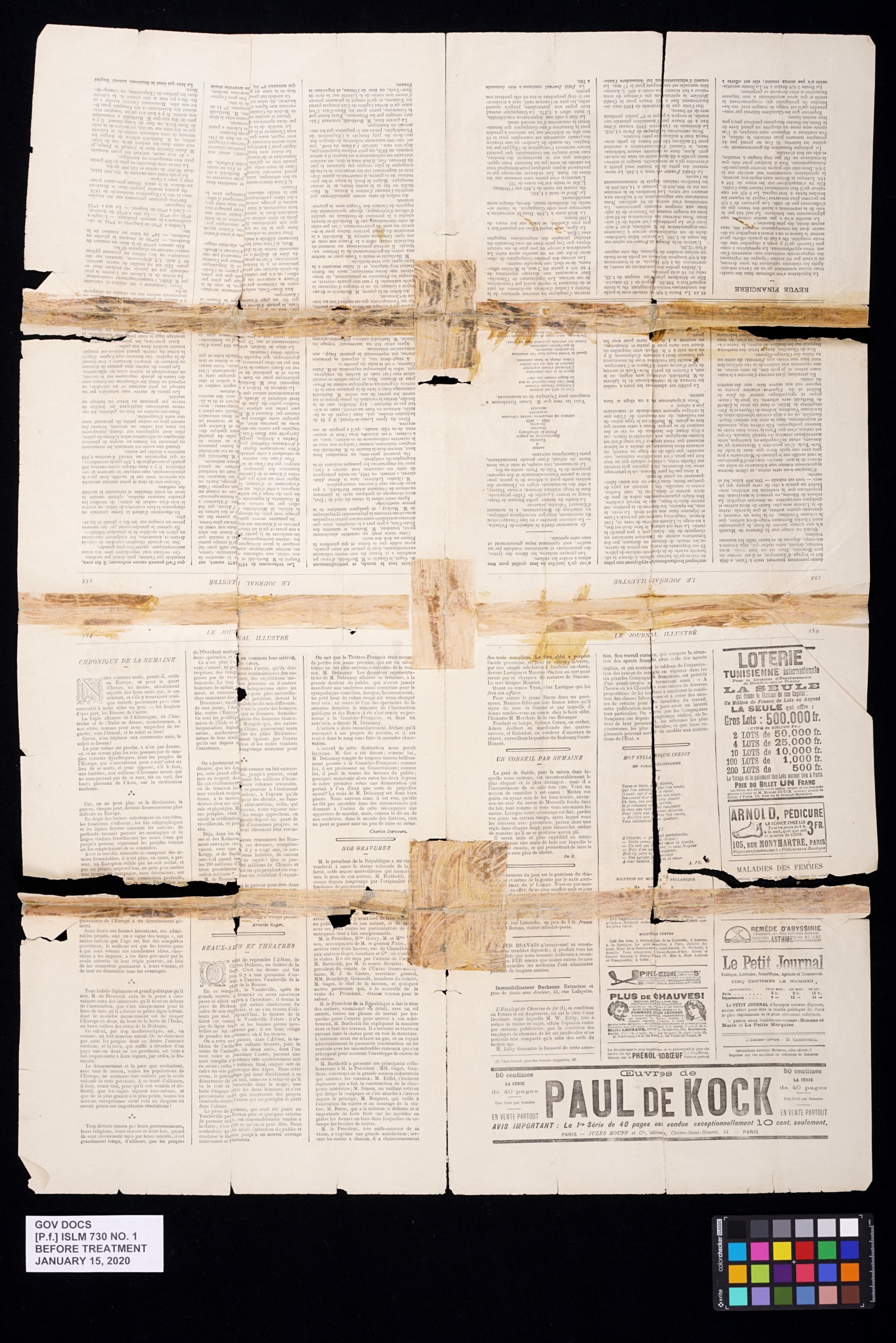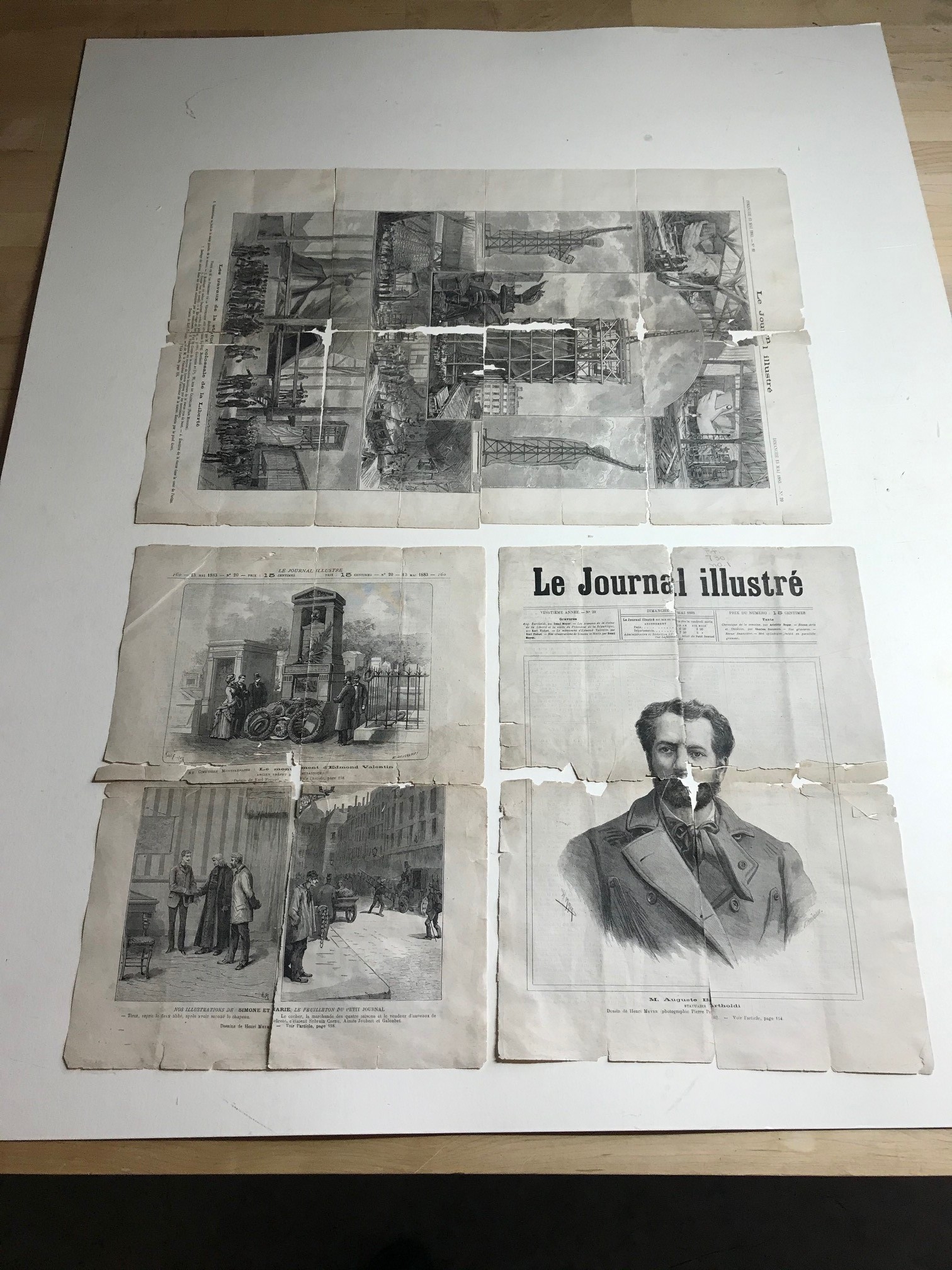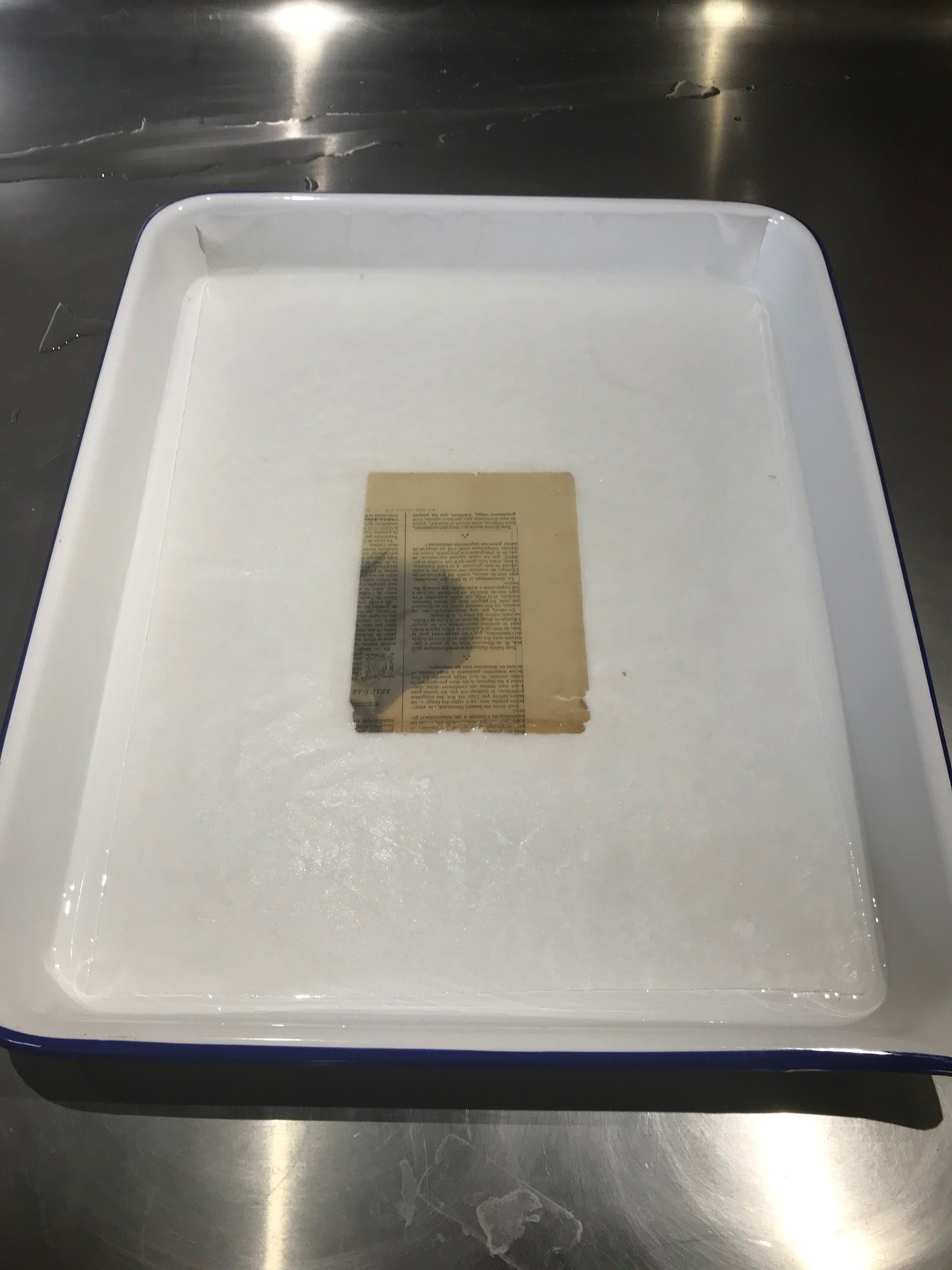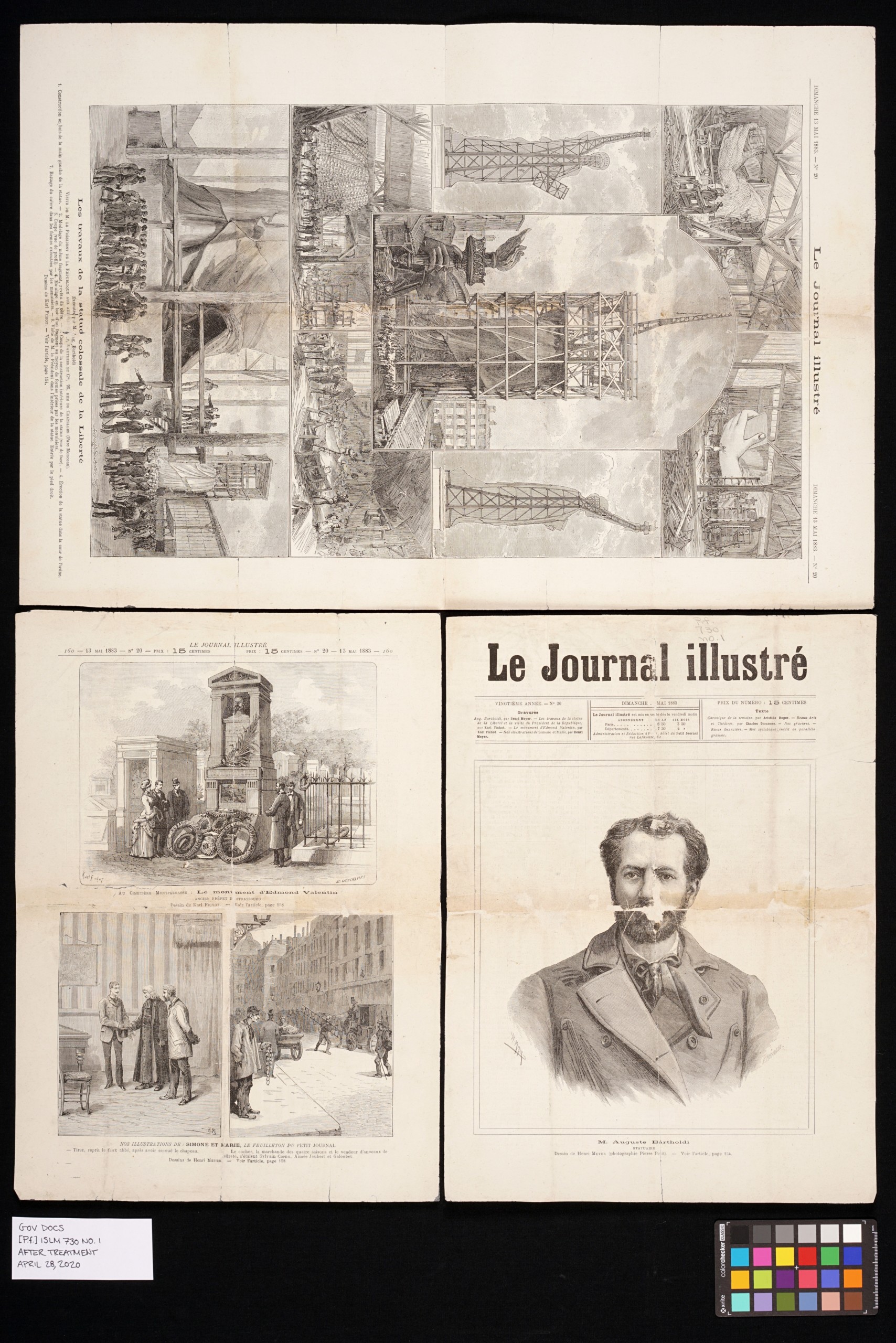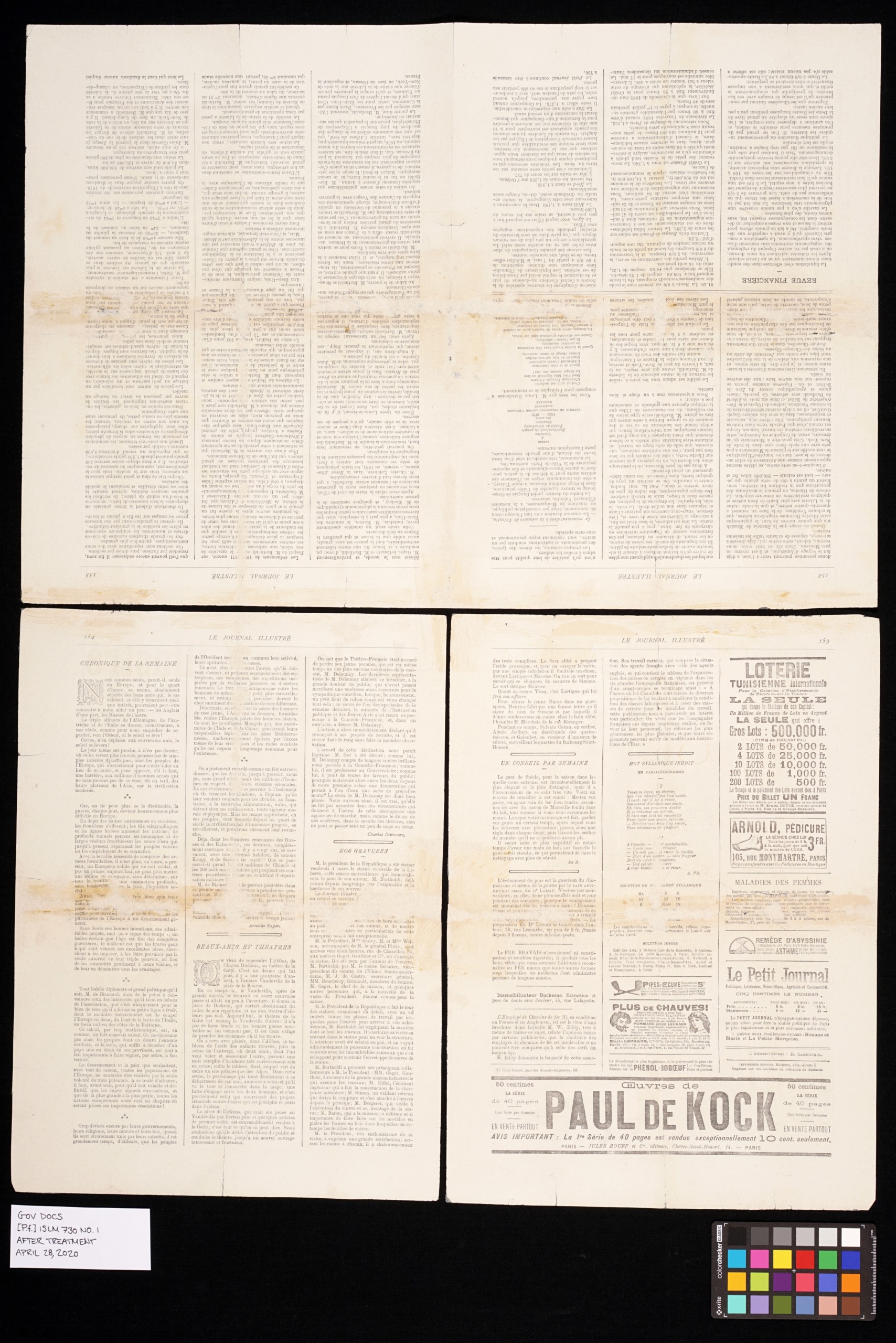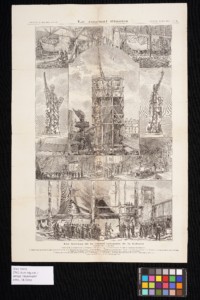In late 2019, a rare newspaper was discovered in the Indiana State Library’s General Pamphlet Collection by Rayjeana Duty, Circulation Support supervisor. The newspaper showed a single sheet from the Le Journal Illustré from May 13, 1883. What made this particular issue of this newspaper unique and special is that it contained articles and illustrations showing the construction of the Statue of Liberty, before it was given to the United States in June of 1885. The images in the newspaper showed not only the Statue of Liberty being built, but also showed various images of the internal structure of the Statue of Liberty.
Upon realizing how unique and rare the newspaper was – and also realizing the poor condition it was in – it was brought to the conservation lab for assessment and conservation treatment. The newspaper was in extremely poor condition. Most of the sheet had been torn along the original folds, and repaired at some point with rubber cement and a thin acidic paper. This caused extremely bad staining throughout the sheet, obscuring both the images and the text. The paper was also extremely brittle and the damage was so severe that the newspaper needed to be handled on a rigid board to prevent pieces from falling off and getting lost. After thorough testing and examination, a plan was put together for a way to remove all of the staining and repair all of the remaining damage.
The first step was to remove all of the old repair paper and rubber cement staining. This was carefully done by applying a solvent to the stained areas on a powerful vacuum table. The solvent would solubilize the old rubber cement and move it into sacrificial blotter paper underneath. Slowly, this cleared out the staining and allow the removal of the old acidic repair paper without damaging the newspaper.
 Once all of the staining and repair paper was removed, all of the tears opened up again. This was sort of like taking an old bandage off a wound. Since the repair paper was the only thing holding all of the pieces together, once the repair paper was removed all of the pieces came apart. This was the point where it was possible to determine how much of the sheet was missing, and how many holes there were. Due to the brittleness of the paper and the staining, each of the pieces were individually washed in specially modified water to de-acidify the paper. This removed much of the brittleness and resulted in the paper being stronger. Much of the yellowing of the paper also went away.
Once all of the staining and repair paper was removed, all of the tears opened up again. This was sort of like taking an old bandage off a wound. Since the repair paper was the only thing holding all of the pieces together, once the repair paper was removed all of the pieces came apart. This was the point where it was possible to determine how much of the sheet was missing, and how many holes there were. Due to the brittleness of the paper and the staining, each of the pieces were individually washed in specially modified water to de-acidify the paper. This removed much of the brittleness and resulted in the paper being stronger. Much of the yellowing of the paper also went away.
Once all of the pieces were washed, the reassembly process began. All of the missing areas were filled with re-pulped paper on a suction table and the sheet was lined with a very thin Japanese tissue with wheat starch paste. This tissue was thin enough to still allow for the text on the opposing side to be read.
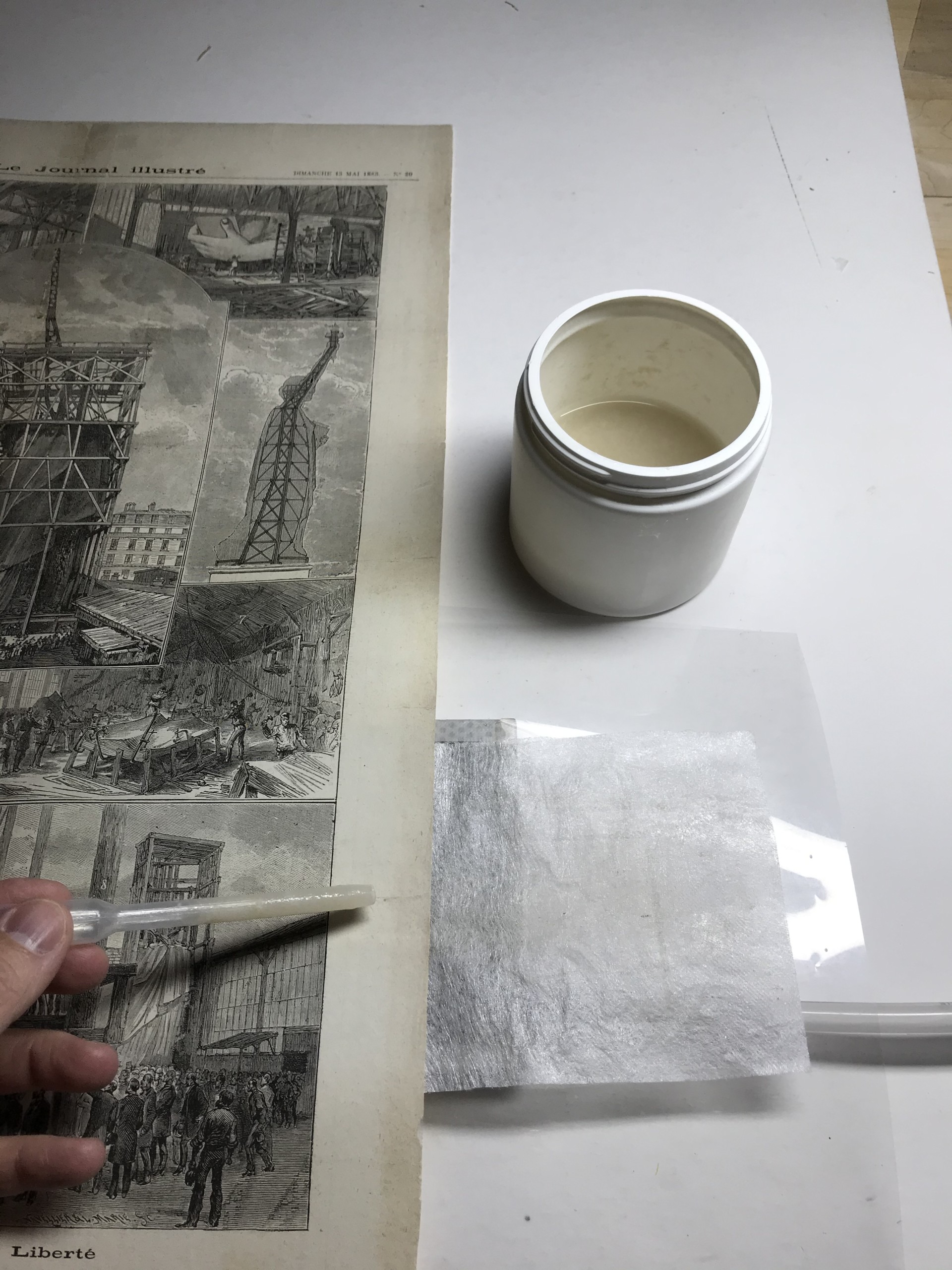 Working under a microscope, the loose pieces were carefully put back into in their correct spots.
Working under a microscope, the loose pieces were carefully put back into in their correct spots.
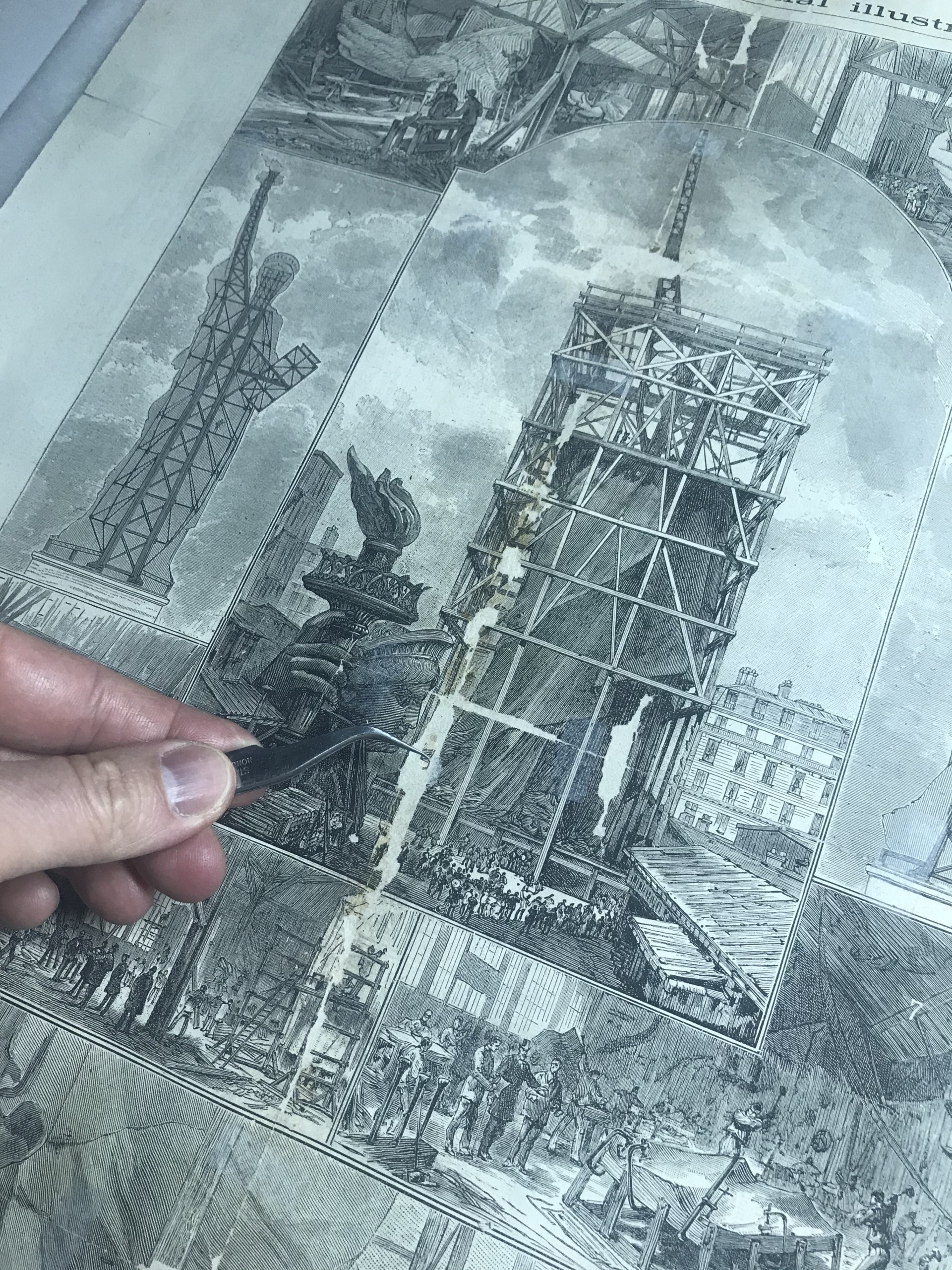 Finally, the newly-filled in areas were carefully in-painted under a microscope to blend in with the surrounding image.
Finally, the newly-filled in areas were carefully in-painted under a microscope to blend in with the surrounding image.
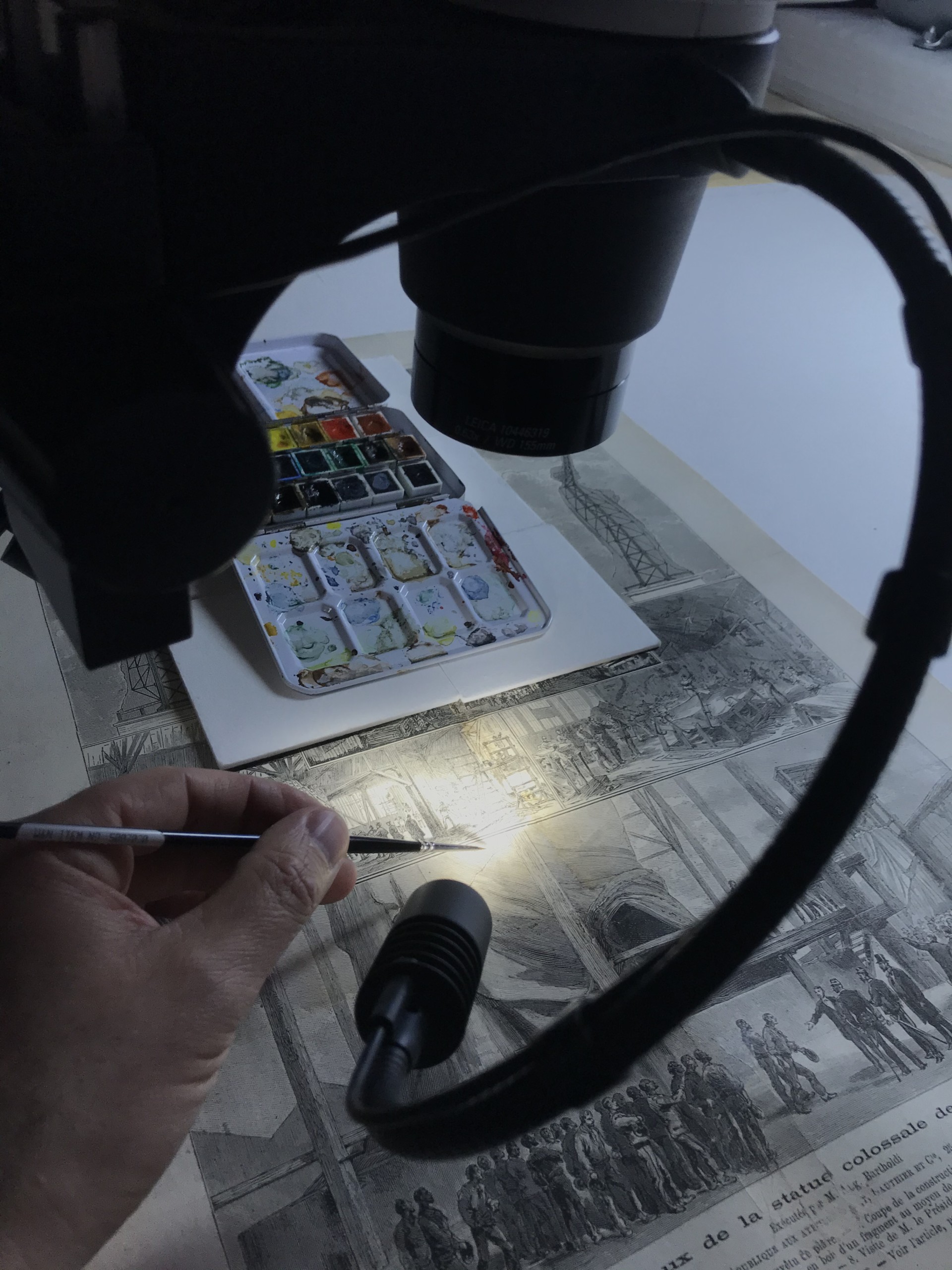 The final result is a newspaper that is better preserved and free of damage. This will allow for better viewing of both the images and the text. Click on the photos below for a larger view.
The final result is a newspaper that is better preserved and free of damage. This will allow for better viewing of both the images and the text. Click on the photos below for a larger view.
Translation of the bottom of the page featuring the Statue of Liberty:
The creation of the colossal statue of liberty
Executed by M. Aug. Bartoldi
Visit from M. President to the manufacture Gauthier and Cie, 25 rue de Chazelle (Parc Monceau)
1. Fabrication in wood of the left hand of the statue.
2. Modeling the same body fragment, covered in plaster.
3. Scheme of the interior structure of the statue, facing forward.
4. Building the statue in the courtyard of the manufacture.
5. Section of the statue, seen from the side
6. Modeling in wood of a part, molds built by the woodworkers.
7. Beating of the copper on the molds built by the woodworkers
8. Visit of M. President inside the statue. Entry through the right foot.
Drawings by Karl Fichot. See article p. 154.
Learn more about the Indiana State Library’s Martha E. Wright Conservation Lab here.
Translation courtesy of Sophie Barbisan, assistant paper conservator at the St. Louis Art Museum.
This blog post was written by Seth Irwin, conservator, Indiana State Library.


